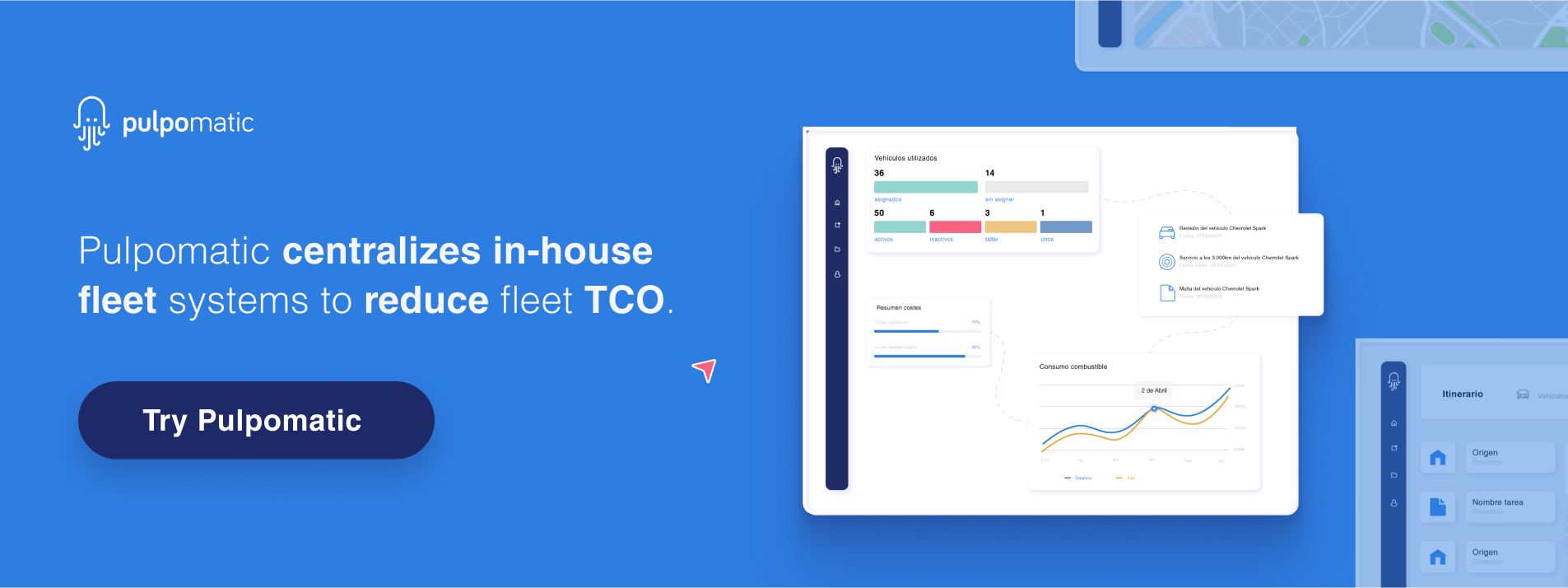If we have a company that uses its own vehicles in its activity, we need to know and understand the costs associated with managing that fleet. Fleet cost control is essential to establish our company´s budget and analyze productivity.
The costs associated with the vehicle fleet are the main expense items in the income statement of a company of this type. Therefore, we need to know the costs of each mile that we travel with each of our vehicles. This will give us a realistic vision when it comes to budgeting and knowing what our profitability is.
If we have optimized and controlled costs we can be more competitive without losing money in transport operations. The cost structure can be divided into two main sections: direct costs and indirect costs.
Direct and indirect costs
Fleet management direct costs
Direct costs are those that we can allocate directly to the vehicle fleet and are also clearly related to them. If the vehicle did not exist, we would not have that cost. For example, renting a truck would be a direct cost.
Direct costs are divided into variable operating costs (they are higher or lower depending on the use of the fleet) and fixed costs (they are intrinsic to the activity and their cost is the same regardless of what the vehicle is used for).
Fixed direct costs
The fixed direct costs do not vary independently of the miles traveled by the vehicles. These costs must be paid by the company even if the vehicle is stationary.
Within the fixed costs, there are capital costs, which have to do with the depreciation and financing of the vehicles, and operating costs, which are translated into wages, salaries, and social contributions of drivers; in addition, vehicle, cargo ,or passenger insurance a well as taxes and fees on the vehicle and its activity are considered operating costs.
Variable costs
The variable costs of fleet operation are divided into: mandatory, related to fuel management, tires, maintenance, breakdowns; and non-mandatory, referring to fines, tolls, meal allowances or incentives.
Variable direct costs are directly related to the level of activity of transport vehicles. The more kilometers that are made, the more fuel, repairs and maintenance there will be.
The cost of fuel is the largest item within these costs and it is necessary to have a good control system for it. The maintenance costs due to the wear and tear of the vehicle are also a considerable item: tire changes, oil changes, repairs, etc.
How to calculate the fleet variable costs
The variable cost of a company can be easily calculated and can be included without difficulties on the expense forecast as they remain stable during the taxable year.
However, variable expenses are more difficult to calculate and include in the company´s expense forecast. One approximate way to do it is to calculate them according to the level of activity, in other words, the miles traveled.
To do this, we must find out the fuel cost per mile traveled; the annual maintenance cost per mile traveled; the cost of tires per mile and the cost of repairs per mile.
These costs must be calculated for each of the vehicles in the fleet. By doing this, we can know which vehicles spend the most and we can make decisions when purchasing and/or decommission a certain transport.
It is also convenient to make an analysis of the variable expenses according to the routes that each unit takes. This will give us information on which routes are more expensive because of higher fuel consumption or because the vehicle suffers more wear and tear and needs more maintenance.
Fleet management indirect costs
Indirect costs are not so strongly linked to the vehicle. They are general expenses of the company structure that we cannot directly attribute to a vehicle, since they are at the service of the company as a whole. For example, we have the costs of the administration and commercial department, which are at the service of the entire company as a whole. Also indirect expenses would be purchases and services associated with the general management of the company: software, computers, office supplies, electrical and telephone supplies, etc.
Indirect costs must be calculated since they must be financed from the productive activity of the company and must be passed on as a percentage of each productive transportation unit in the business. They are not directly related to a specific vehicle or department of the company, but they are necessary for the company to function.
A good fleet management system is always needed.
In order to have a good control of the cost of vehicle fleet management, it is essential to have a fleet management software that facilitates this work. It must be easy and intuitive to use, and it must allow the extraction of all the reports that fleet managers need to make the right decisions.

